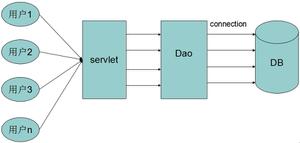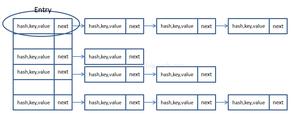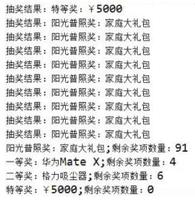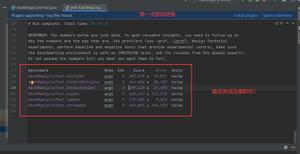java HashMap内部实现原理详解
详解HashMap内部实现原理
内部数据结构
static class Entry<K,V> implements Map.Entry<K,V> {
final K key;
V value;
Entry<K,V> next;
int hash;
从上面的数据结构定义可以看出,HashMap存元素的是一组键值对的链表,以什么形式存储呢
transient Entry<K,V>[] table = (Entry<K,V>[]) EMPTY_TABLE;
可以看出,是以数组形式储存,好的,现在我们知道,HashMap是以数组形式存储,每个数组里面是一个键值对,这个键值对还可以链接到下个键值对。如下图所示:
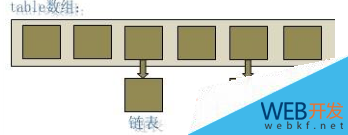
hashmap的添加
public V put(K key, V value) {
if (table == EMPTY_TABLE) {
inflateTable(threshold);
}
if (key == null)
return putForNullKey(value);
int hash = hash(key);
int i = indexFor(hash, table.length);
for (Entry<K,V> e = table[i]; e != null; e = e.next) {
Object k;
if (e.hash == hash && ((k = e.key) == key || key.equals(k))) {
V oldValue = e.value;
e.value = value;
e.recordAccess(this);
return oldValue;
}
}
modCount++;
addEntry(hash, key, value, i);
return null;
}
这里可以看出,hashmap的添加,首先根据一个entry的hash属性去查找相应的table元素i,然后看这个位置是否有元素存在,如果没有,直接放入,如果有,遍历此次链表,加到表尾
删除
final Entry<K,V> removeEntryForKey(Object key) {
if (size == 0) {
return null;
}
int hash = (key == null) ? 0 : hash(key);
int i = indexFor(hash, table.length);
Entry<K,V> prev = table[i];
Entry<K,V> e = prev;
while (e != null) {
Entry<K,V> next = e.next;
Object k;
if (e.hash == hash &&
((k = e.key) == key || (key != null && key.equals(k)))) {
modCount++;
size--;
if (prev == e)
table[i] = next;
else
prev.next = next;
e.recordRemoval(this);
return e;
}
prev = e;
e = next;
}
return e;
}
删除的话,还是先根据hash在table数组中查找,然后再根据equals在链表中进行查找,这个也是为什么hashmap和hashset等以hash方式进行存储的数据结构要求实现两个方法hashcode和equalsd的原因
学过hash的人都知道,hash表的性能和hash冲突的发生次数有很大关系,但有不能申请过长的table表浪费空间,所以这里有了我们的resize函数
扩容机制
void resize(int newCapacity) {
Entry[] oldTable = table;
int oldCapacity = oldTable.length;
if (oldCapacity == MAXIMUM_CAPACITY) {
threshold = Integer.MAX_VALUE;
return;
}
Entry[] newTable = new Entry[newCapacity];
transfer(newTable, initHashSeedAsNeeded(newCapacity));
table = newTable;
threshold = (int)Math.min(newCapacity * loadFactor, MAXIMUM_CAPACITY + 1);
}
这个方法会在put的时候调用,上面put的时候先调用 addEntry(hash, key, value, i);方法,然后看addEntry方法
void addEntry(int hash, K key, V value, int bucketIndex) {
if ((size >= threshold) && (null != table[bucketIndex])) {
resize(2 * table.length);
hash = (null != key) ? hash(key) : 0;
bucketIndex = indexFor(hash, table.length);
}
createEntry(hash, key, value, bucketIndex);
}
上面可以看出那么 HashMap 当 HashMap 中的元素个数超过数组大小 *loadFactor 时,就会进行数组扩容,loadFactor 的默认值为 0.75,这是一个折中的取值。也就是说,默认情况下,数组大小为 16,那么当 HashMap 中元素个数超过 16*0.75=12 的时候,就把数组的大小扩展为 2*16=32,即扩大一倍,然后重新计算每个元素在数组中的位 置,而这是一个非常消耗性能的操作,所以如果我们已经预知 HashMap 中元素的个数,那么预设元素的个数能够有效的提高 HashMap 的性能。
感谢阅读,希望能帮助到大家,谢谢大家对本站的支持!
以上是 java HashMap内部实现原理详解 的全部内容, 来源链接: utcz.com/p/211376.html

